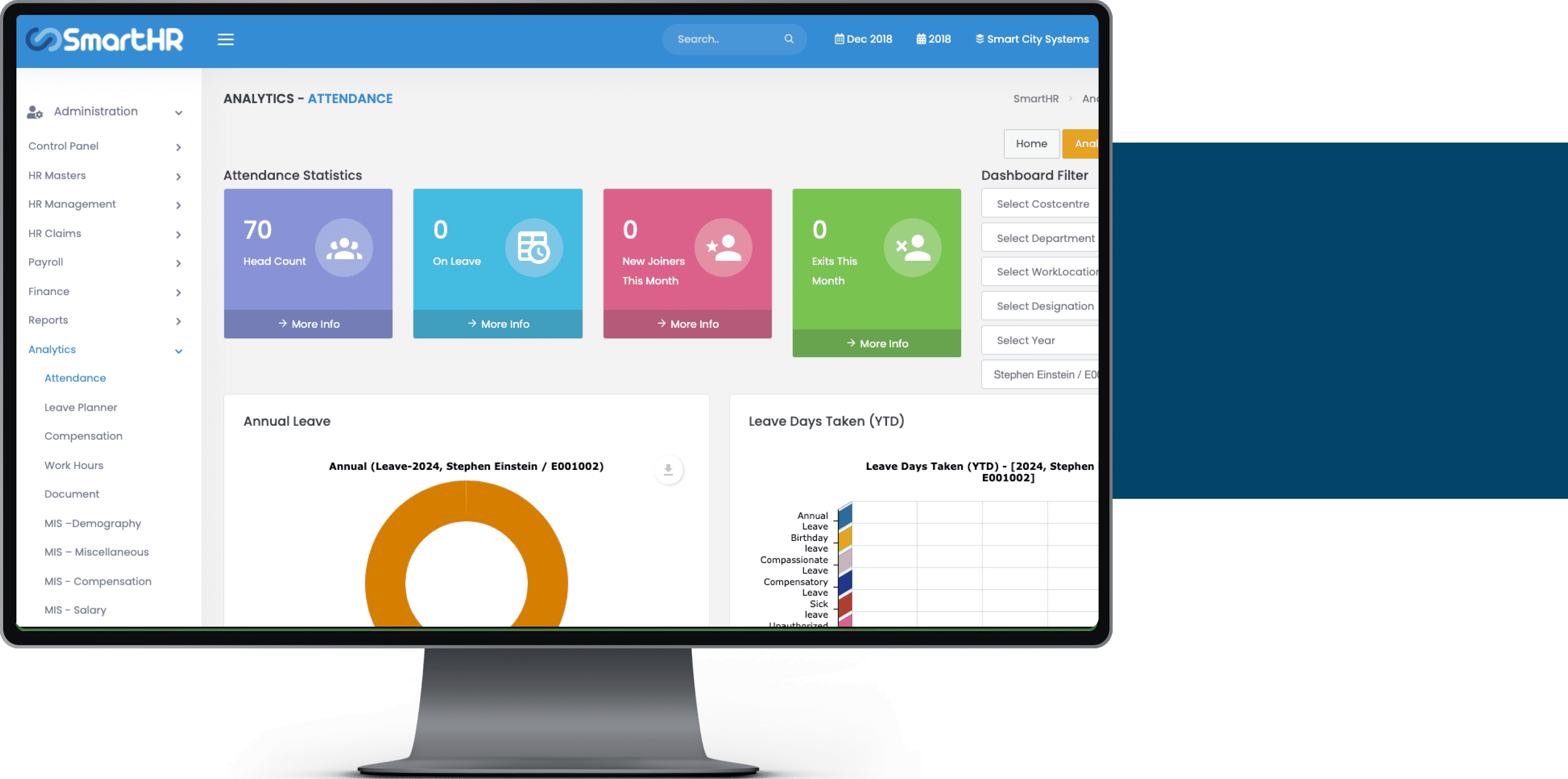Strategic SmartHR Budgeting: Empowering Your Team,Optimizing Your Resources!
Invest in your workforce's potential with strategic HR budgeting. Our expert solutions empower you to allocate resources efficiently, drive performance, and achieve your business goals. Transform your HR budget into a strategic asset for growth and success.
SmartHR Budgeting: Empowering Your People, Elevating Your Business
In today’s fast-paced business world, effective management of human resources is more critical than ever. A well-planned HR budget is not just a financial document; it’s a strategic roadmap that aligns your workforce with your organizational goals.
HR budgeting is a strategic process that involves planning, allocating, and managing financial resources for human resources activities within an organization. It plays a critical role in ensuring that the organization has the right people in the right roles, with the right skills, at the right time. A well-executed HR budget can help organizations optimize their workforce, control costs, and drive business performance.
By investing in HR budgeting, organizations can empower their employees and elevate their business. This involves not only budgeting for salaries and benefits but also for training and development programs, employee engagement initiatives, and other activities that contribute to a positive work environment. An effective HR budget can help attract and retain top talent, enhance employee satisfaction and productivity, and ultimately, drive business success.

Why is SmartHR Budgeting so Important?
HR budgeting is essential for strategic resource allocation efficiently, control costs, and make informed decisions about your workforce. Ensuring that HR initiatives are in line with organizational goals is facilitated by it. You can establish a good work environment that draws and keeps top talent by making investments in the growth and well-being of your staff. Budgeting for HR is crucial for many different kinds of reasons.
HR budgeting ensures that resources are allocated efficiently, with the right people in the right roles. This helps maximize productivity and performance.
A well-planned HR budget helps organizations control costs by identifying areas where spending can be reduced or reallocated.
HR budgeting provides valuable insights that enable informed decision-making. It allows organizations to prioritize HR initiatives based on their impact on organizational goals.
Investing in HR budgeting allows organizations to attract and retain top talent. In order to stay competitive in the market, this is essential.
HR budgeting enables organizations to invest in employee development programs. This not only enhances employee skills and competencies but also improves morale and engagement.
HR budgeting includes provisions for compliance and risk management, ensuring that the organization operates within legal and regulatory frameworks.
A flexible HR budget allows organizations to adapt to changing business environments. It enables them to reallocate resources quickly in response to market dynamics.
Key Features of SmartHR Budgeting & Planning

Budget Planning
Create and manage HR budgets for salaries, benefits, training, and recruitment. Set budget targets and track expenses to ensure alignment with organizational goals.

Resource Allocation
Allocate resources based on strategic priorities and departmental needs. Optimize workforce utilization by aligning resources with business objectives.

Scenario Modeling
Conduct "what-if" analyzes to evaluate the impact of different budget scenarios. Make informed decisions by assessing the financial implications of various options.

Reporting and Analytics:
Generate comprehensive reports and analytics to gain insights into budget performance. Identify trends, patterns, and areas for improvement to enhance budgeting strategies.

Collaboration Tools
Facilitate collaboration among HR professionals and department managers. Share budget data, collaborate on budget planning, and track progress towards budget goals.

Security and Access Control
Implement robust security measures to protect sensitive budget data. Restrict access to authorized users based on their roles and permissions.

Expense Tracking
Monitor actual expenses against budgeted amounts in real-time. Identify and address budget variances to control costs effectively.

Income Tracking & Approvals
Income Tracking and Approvals streamline financial processes by monitoring income sources and authorizing transactions, ensuring budgetary compliance and effective resource management.

Integration
Integrate with other HR systems such as payroll and talent management. Ensure data consistency and streamline processes by sharing information across systems.

Document Level Budget Alerts and Notifications
Document Level Budget Alerts and Notifications provide real-time updates on budgetary thresholds and deviations, empowering timely decision-making and proactive budget management.

Compliance Management
Make sure that company policies, rules, and labor laws are all followed. Receive alerts and notifications for potential compliance issues and take corrective actions.

Scalability
Expand to suit groups of varying sizes and levels of complexity. Support growth and expansion by accommodating changing budgeting requirements.
Key Components of SmartHR Budgeting & Planning
HR budgeting involves estimating and allocating resources for various aspects of managing human resources within an organization. To effectively plan and manage HR budgets, it’s essential to understand the key components that make up these budgets. The following are a few essential elements:

Salary and Benefits
This comprises the largest portion of the HR budget and includes employee wages, bonuses, health insurance, retirement contributions, and other benefits.

Recruitment and Training Costs
This includes expenses related to hiring new employees, such as job advertisements, recruitment agency fees, background checks, and training programs for new and existing staff.

Employee Development
This includes expenses related to training and development programs to enhance the skills and knowledge of employees, such as workshops, seminars, and tuition reimbursement.

Technology and Software Expenses
This includes costs associated with HR software and technology used for recruitment, payroll, performance management, and other HR functions.

Employee Perks and Recognition Programs
This includes expenses related to employee perks such as wellness programs, employee recognition programs, and other incentives to improve employee satisfaction and retention.

Consulting and Outsourcing Costs
This includes expenses related to hiring external consultants or outsourcing certain HR functions, such as payroll processing or benefits administration.
Methods of SmartHR Budgeting
HR budgeting methods encompass the various approaches or procedures employed by firms in the development and administration of their HR budgets. These methods help HR departments allocate resources effectively and efficiently to meet their human resource needs. Some common methods of HR budgeting include:

Incremental Budgeting
This method involves using the previous year's budget as a base and making adjustments based on changes in costs, headcount, and other factors. It is a straightforward approach but may not always reflect the organization's current needs.

Zero-Based Budgeting
Unlike incremental budgeting, zero-based budgeting requires HR departments to justify all expenses from scratch, starting from zero. This method forces organizations to reevaluate every expense, ensuring that resources are allocated based on current priorities and needs.

Activity-Based Budgeting
This method involves identifying and budgeting for specific HR activities or programs. By linking budgeted costs to specific activities, organizations can better understand the cost drivers and allocate resources more effectively.

Performance-Based Budgeting
This method focuses on linking HR budgeting to the organization's performance goals. HR departments allocate resources based on the expected impact on organizational performance, aligning HR activities with strategic objectives.

Flexible Budgeting
Flexible budgeting allows for adjustments to the budget based on changes in the organization's needs or external factors. This method provides more agility in resource allocation, allowing HR departments to respond quickly to changing circumstances.

Priority-Based Budgeting
In this method, HR departments prioritize their budget items based on their importance to achieving organizational goals. This helps ensure that limited resources are allocated to the most critical HR activities first.

Are you ready to optimize your HR budgeting and planning processes?
Contact us today to learn how our solutions can help you align your HR strategies with your organizational goals, maximize your resources, and drive business success.
Frequently asked Questions
HR budgeting is calculating and assigning resources for different HR tasks with a concentrate on the financial side of things. HR planning aligns HR strategies with organizational goals and forecasts future workforce needs, taking a more strategic approach.
HR budgets should be reviewed and adjusted regularly to ensure they remain aligned with organizational goals and reflect changing needs. A common practice is to review budgets quarterly or annually, but the frequency may vary based on organizational needs.
Technology plays a significant role in HR budgeting by providing tools for budget creation, tracking, and analysis. HR software can streamline budgeting processes, improve data accuracy, and provide insights for better decision-making.
HR departments can justify their expenses by demonstrating the value of HR initiatives in achieving organizational goals. This can be done through metrics such as employee retention rates, productivity improvements, and cost savings resulting from HR programs.
Common mistakes to avoid include:
- Not aligning HR goals with organizational goals.
- Failing to involve key stakeholders in the budgeting process.
- Using outdated or inaccurate data for budgeting.
- Overlooking external factors that may impact budgets.
- Not monitoring and adjusting budgets as needed throughout the year.
